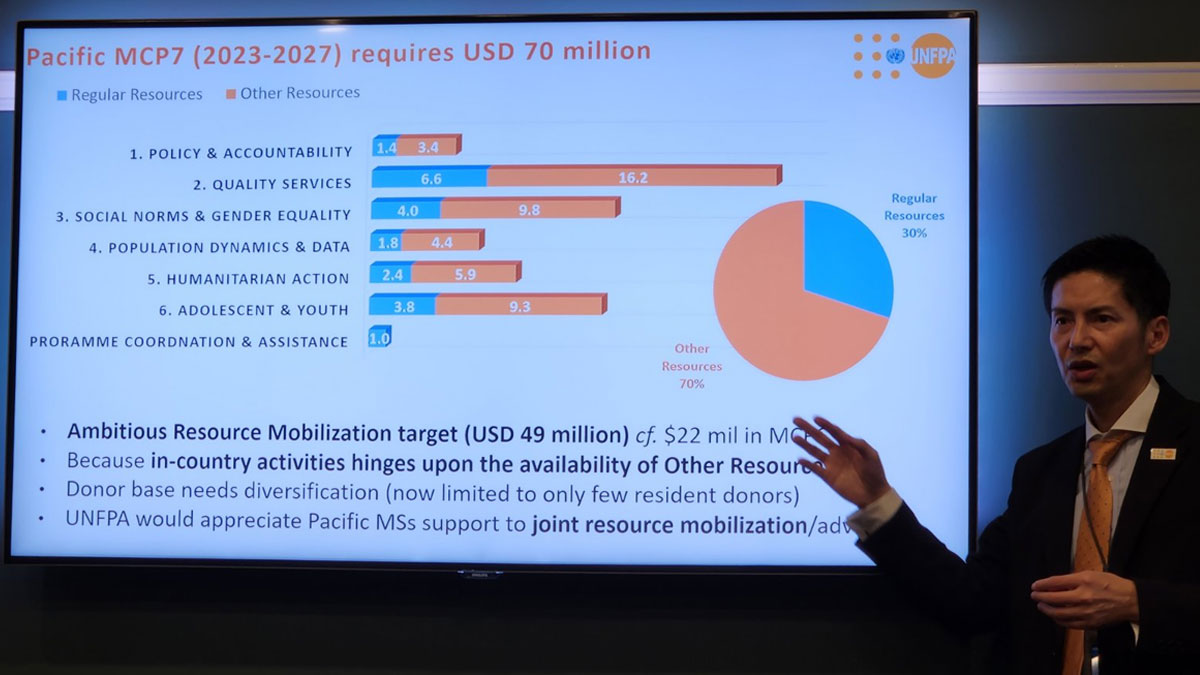
Alarming statistics have been revealed on the amount of maternal deaths in Fiji, and the United Nations Population Fund Pacific Director and Representative, Iori Kato says they plan to revamp funds to the Fijian Ministry of Health to find solutions and fully establish who are dying, why are mothers dying at birth and what are the causes.
According to the latest statistics highlighted by UNFPA today, it shows that there were 86 maternal deaths per 100,000 live births in Fiji between 2010 to 2022 compared to 27 maternal deaths per 100,000 live births in prior to 2010.
Kato says the UNFPA plans to expand its assistance to the Ministry of Health and Medical Services to further reduce maternal deaths, by continuing to strengthen the country's midwifery profession and donate family planning commodities, but also further strengthen the Maternal and Perinatal Death Surveillance and Response System.
In 2019 UNFPA Pacific started providing technical support to the Health Ministry to establish a Maternal Death Surveillance and Response system to analyse the causes of deaths during pregnancy and childbirth and prevent avoidable maternal deaths in the future.
In 2022, with support from UNFPA Pacific, Fiji Health Ministry transitioned from the Maternal Death Surveillance and Response system further to establishing a Maternal and Perinatal Death Surveillance and Response and conducted the first-ever training and developed an action plan for establishing committees at National, Divisional and Sub-divisional levels.
Kato says this is particularly important as the loss of a baby increases the desire to have another, thus increasing the risk of pregnancy-related maternal morbidities and mortality.
Under the new 7th Multi-Country Programme (2023-27), UNFPA Pacific is currently supporting Ministry of Health in developing its inaugural National MPDSR Guidelines.
UNFPA’s Deputy Director and Deputy Representative, Mateen Ahmed Shaheen says we need to establish what is happening to our mothers at birth.
He says based on global actions, a full maternal and child death surveillance has to be done.
He says based on this, they can establish pregnancy related and non-pregnancy related deaths.
The World Health Organisation states that the maternal mortality ratio is defined as the number of maternal deaths during a given time period per 100,000 live births during the same time period.
It depicts the risk of maternal death relative to the number of live births and essentially captures the risk of death in a single pregnancy or a single live birth.
Maternal deaths is defined as the annual number of female deaths from any cause related to or aggravated by pregnancy or its management (excluding accidental or incidental causes) during pregnancy and childbirth or within 42 days of termination of pregnancy, irrespective of the duration and site of the pregnancy, expressed per 100,000 live births, for a specified time period.
Live birth is defined as the complete expulsion or extraction from its mother of a product of conception, irrespective of the duration of the pregnancy, which, after such separation, breathes or shows any other evidence of life such as beating of the heart, pulsation of the umbilical cord, or definite movement of voluntary muscles, whether or not the umbilical cord has been cut or the placenta is attached.
For the purpose of international reporting of maternal mortality, only those maternal deaths occurring before the end of the 42-day reference period should be included in the calculation of the various ratios and rates.
Stay tuned for the latest news on our radio stations

